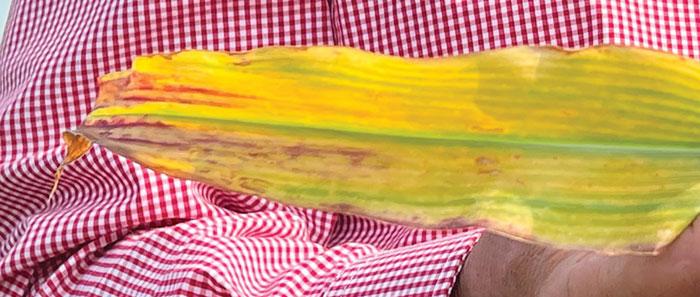I’ve been farming for 50 years in northwest Illinois, and I’m coming up on my 40th year of independent on-farm research. We have silty loam soils, dark in color and poorly drained, but also very productive.
I started no-tilling in the middle ‘80s and on, but I’m a past strip-tiller. In the late 1980s, I had two strip-till toolbars, two 8-rows with 30-inch spacing. One of them was a DMI, and one of them was homemade. I was in strip-till right up until ‘95 when I went to 15-inch rows because of the yield advantage.
2023 was the year we switched back to strip-till, and it’s because of nutrient stratification. If you look at my nutrient levels inch by inch, that top inch has the highest level of nutrients of the whole profile, and then I have reduced levels of nutrients as I move through that profile. I have looked at hundreds of soil tests inch by inch through the profile.

Dig Into the Data
In this video from the National Strip-Tillage Conference, Marion Calmer shows the results from his inch-by-inch soil samples and how moldboard plowing changed the distribution of nutrients. Click here to watch the presentation.
I’m going to tell you that this is not no-till’s fault. It’s something that I’ve done wrong over the last 30 years. Surface broadcasting is on the way out. It doesn’t do me any good, it doesn’t do my crops any good, and it sure as hell doesn’t do the environment any good. But I’ve been doing it for 30 years, and I’m just plain pissed that the lights never went on.
So I needed to destratify the soil, which simply means I mixed those nutrients back up. I moldboard plowed 1.6 acres to destratify one of my plots. Is there a yield advantage to destratification? The answer is yes.
In college, they taught us phosphorus (P) moves only about 1 inch after application. Potassium (K) moves about 2 inches. Today, I believe that’s true. My soil stratification results are going to back that up. I plowed about $1,000 worth of surface-applied P and K, and I put it into the root zone. Sure enough, we were able to take those surface nutrients and put them into the middle of the root zone.
“2023 was the year that we switched back to strip-till…”
My high-fertility plots produced 68-bushel soybeans in 2022. That’s not bad, but all my nutrients were on top of the ground, and we had some dry weather a year ago during the growing season for the soybean plant. Where we had moldboard plowed, the beans were 77 bushels to the acre, which is a 9-bushel advantage. This is where I get pissed. This is $135 an acre and on 1,000 acres of beans, that’s $135,000 that I’ve left on the table every year since I’ve been no-tilling because I surface applied. Remember, it’s not a no-till problem — I should have been putting the P and K in the ground, not on the surface.
That’s where strip-till comes in. We’re running an Environmental Tillage Systems SoilWarrior this fall, and we’re going to prepare a zone that’s 10 inches by 10 inches and probably 12 inches deep. We’re going 100% strip-till both corn and soybeans. We’re going to mix some nutrients in there so that they’re in the root zone where the moisture is to grow even a better crop.







